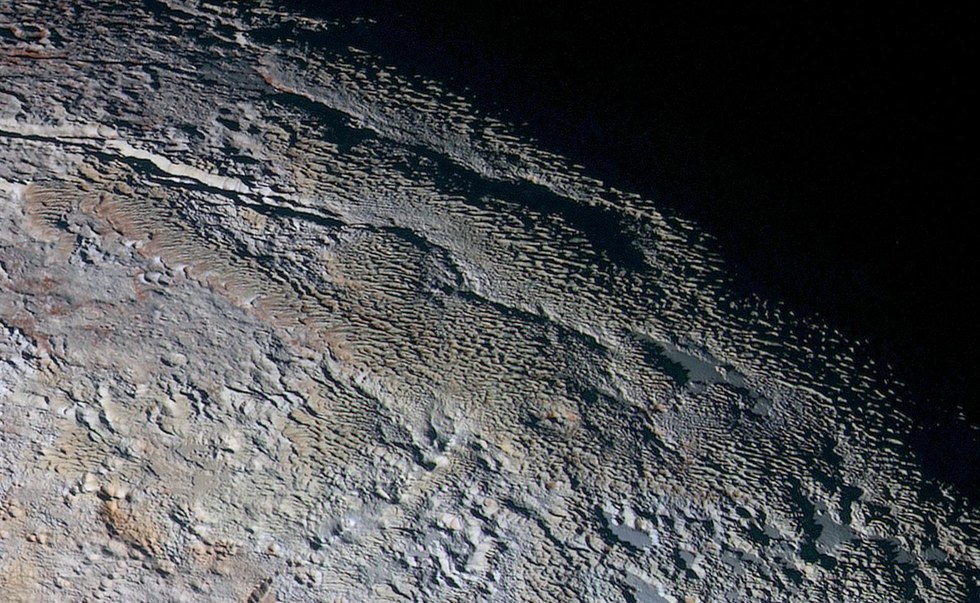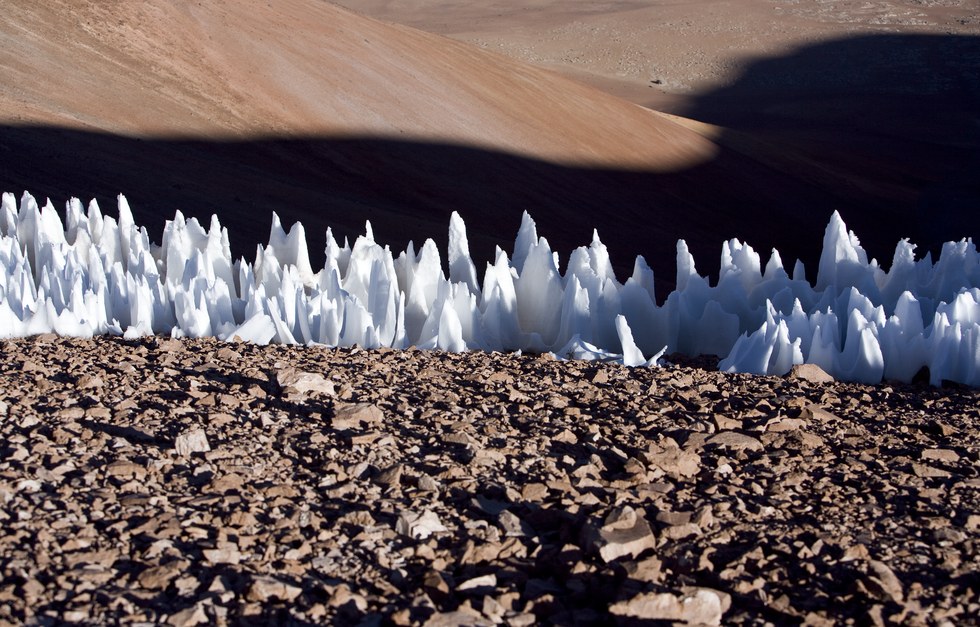Prickly Pluto Could Reveal Ice Spikes Are Common on Other Worlds

When New Horizons whizzed by Pluto in 2015, images from the spacecraft revealed a geologist's dream. Icy mountains, a nitrogen glacier and a surprisingly youthful surface changed our notions of the distant dwarf planet forever. And even 18 months after the flyby, discoveries continue to pour in as scientists analyze the treasure trove of data.
The latest Pluto finding is evidence of features called "penitentes" — if confirmed this would be the first time these icy formations have been found beyond Earth. On our home planet, we know these icy spikes can grow up to several feet tall. They form in high-altitude environments, where the atmosphere is thinner and melting ice moves directly to vapor without a liquid phase in between. This sublimation (as the process is called) leaves bowl-shaped depressions behind.
But that's not all. John Moores, the lead author of the discovery paper in the journal Nature, says these features may well be in other locations across the solar system. Jupiter's Europa, for example, is a prime suspect given that radar signatures from the Galileo spacecraft suggest they could be there. But he says penitentes may even lurk in more familiar realms — even on Mars.
RELATED: Pluto Has an Underground Ocean of Water and Slush
"We want to investigate other places in the solar system, or perhaps other solar systems, where you expect these features to show up," said Moores, who is with Canada's York University. He pointed out that penitentes may even lurk below the resolution of photos we took at planets and moons in the past. "If they were to be small, they may be in places we feel we already understand."

Regardless of whether penitentes are common — or unique to Earth and Pluto — the find on the dwarf planet shows some remarkable characteristics. Pluto's penitentes are made of methane ice, while on Earth they're composed of water ice. Pluto's are more widely spread apart than what we find on Earth, where Moores says graduate students have trouble clambering among the spikes. On Pluto, by contrast, it appears the features are separated by a couple of miles. So there's plenty of room to set down a lander if we wanted.
RELATED: Is Europa Too Prickly to Land On?
Get the Space.com Newsletter
Breaking space news, the latest updates on rocket launches, skywatching events and more!
What's more, the penitentes suggest that Pluto had calm atmospheric conditions over long periods of time, perhaps tens of millions of years. Regularly spaced and shaped penitentes, like what we see on Pluto, require an atmosphere; irregularly ones could develop where no substantial atmosphere is present, like Europa. Pluto's atmosphere expands and collapses as it gets further and closer from the sun in its nearly 248-year orbit. From numerical models, the team suggests that the penitentes could start growing (and continue developing) given warm enough atmospheric conditions for just a few years at a time.

"The winds on Pluto are really light, and there's only one period in every orbit where the atmosphere grows thick enough to control the creation of these types of features," Moores said. The active time right now is during the spring equinox, but Pluto's orbit has changed over the years; in the more distant past, penitentes best grew during the autumnal equinox, he said.
While Moores' team looks to other worlds for evidence of penitentes, they are also eagerly waiting for two Jupiter missions that will explore the icy moons — the proposed NASA Europa mission, and Europe's confirmed JUICE (JUpiter ICy moons Explorer). These missions are expected to visit Jupiter's system around the 2030s, focusing on Europa (in the Europa Clipper's case) and Ganymede (for JUICE).
WATCH VIDEO: Where Is New Horizons?
Originally published on Seeker.
Join our Space Forums to keep talking space on the latest missions, night sky and more! And if you have a news tip, correction or comment, let us know at: community@space.com.

Elizabeth Howell (she/her), Ph.D., was a staff writer in the spaceflight channel between 2022 and 2024 specializing in Canadian space news. She was contributing writer for Space.com for 10 years from 2012 to 2024. Elizabeth's reporting includes multiple exclusives with the White House, leading world coverage about a lost-and-found space tomato on the International Space Station, witnessing five human spaceflight launches on two continents, flying parabolic, working inside a spacesuit, and participating in a simulated Mars mission. Her latest book, "Why Am I Taller?" (ECW Press, 2022) is co-written with astronaut Dave Williams.









